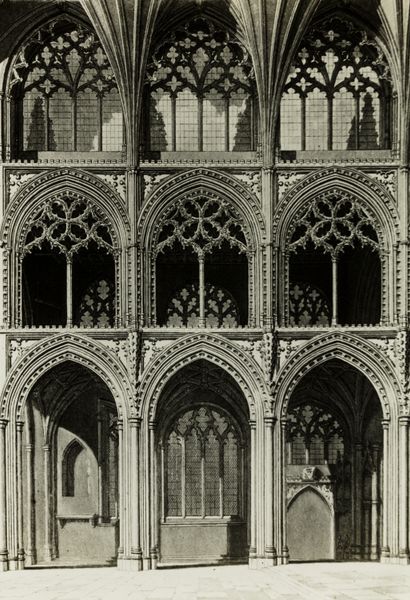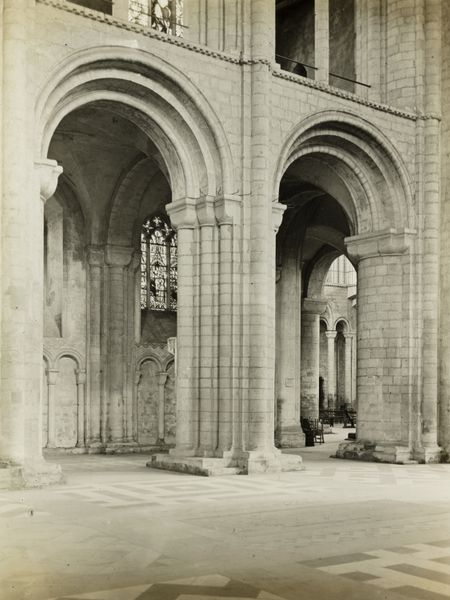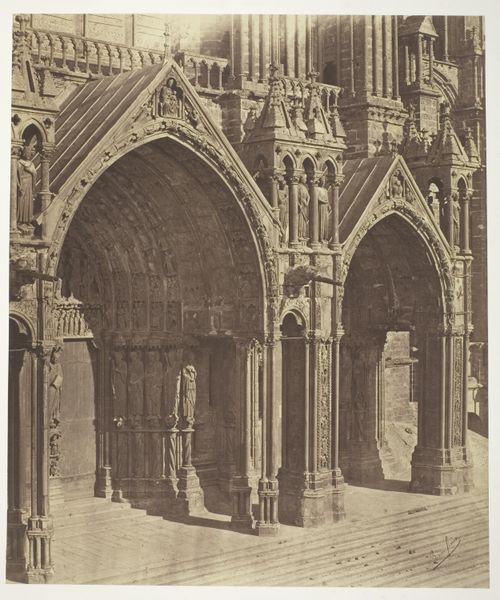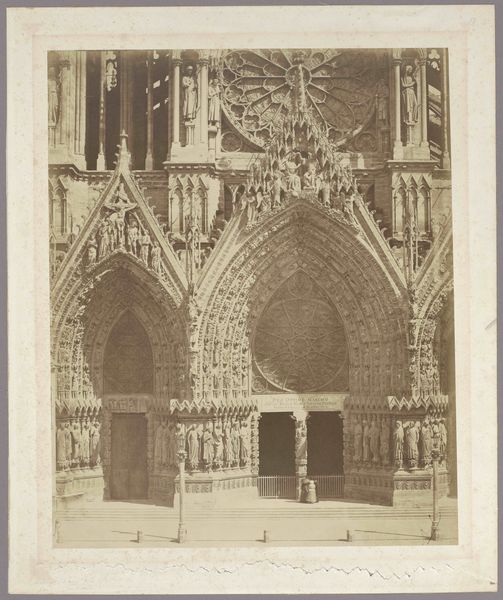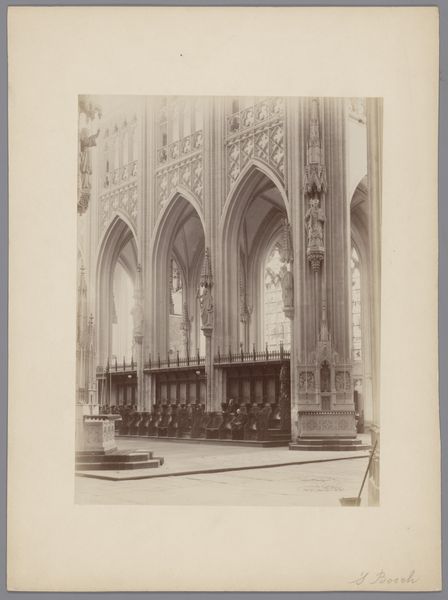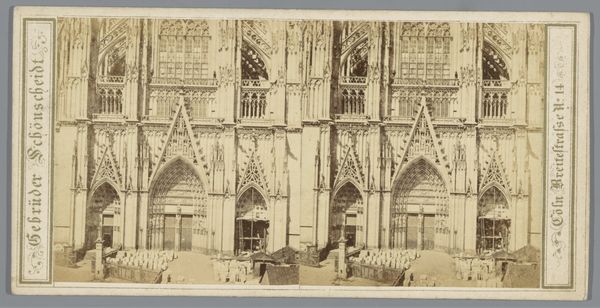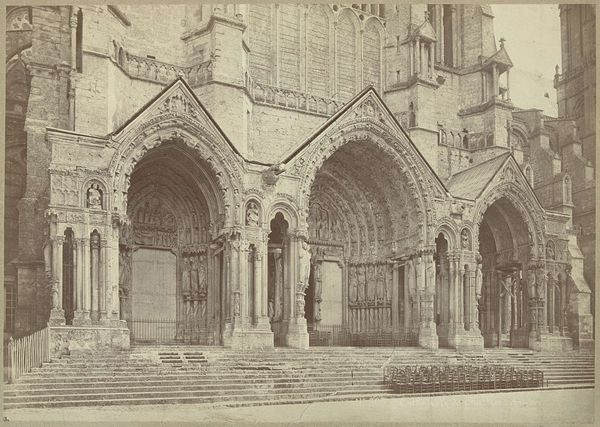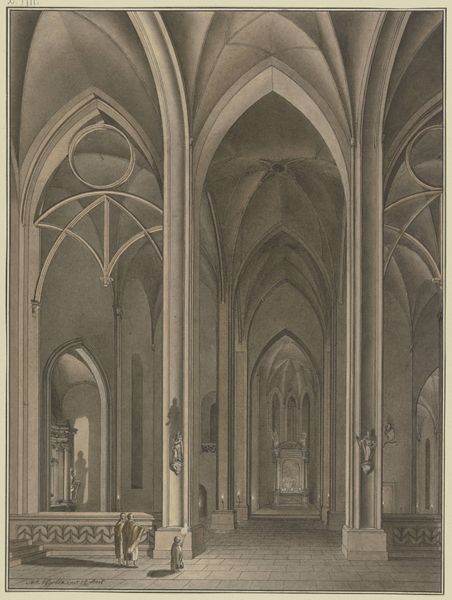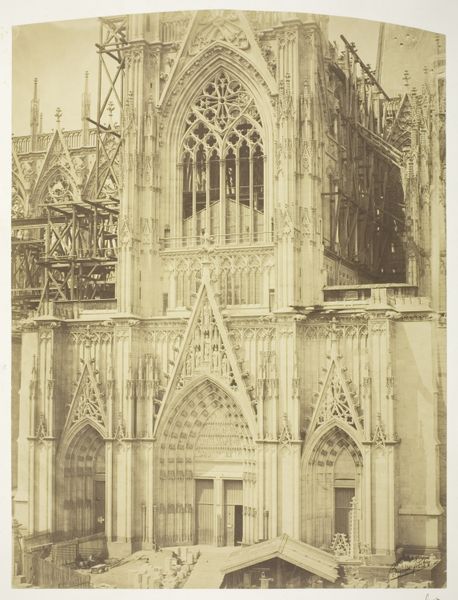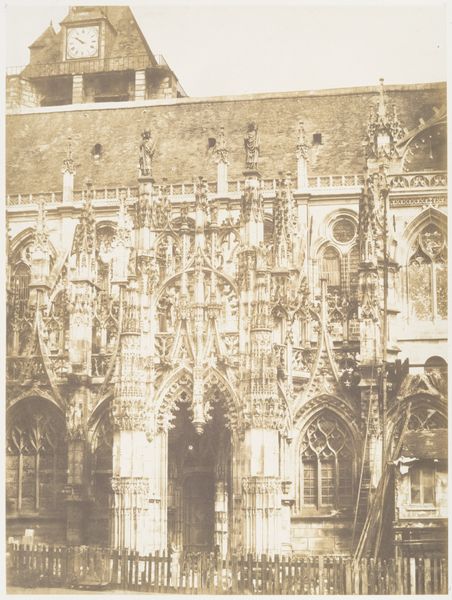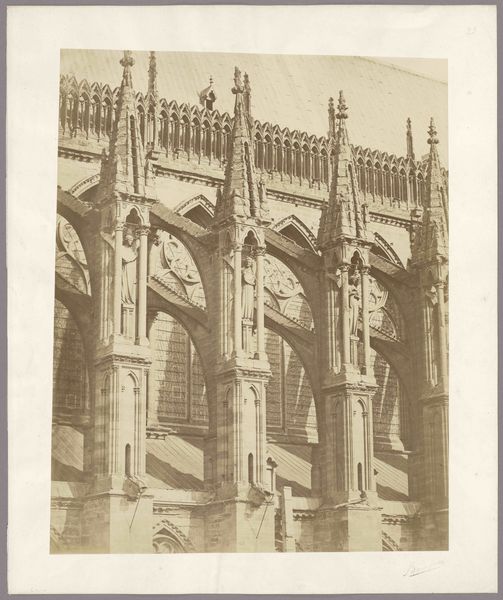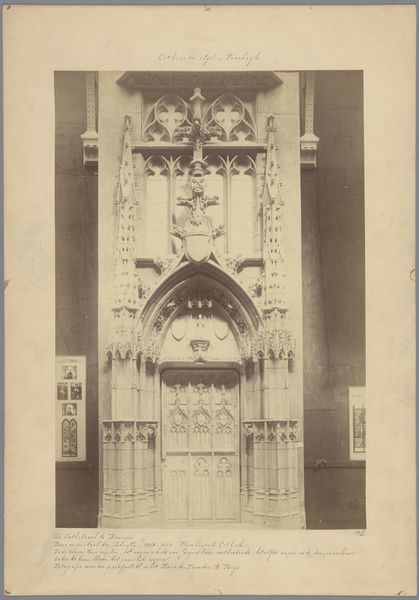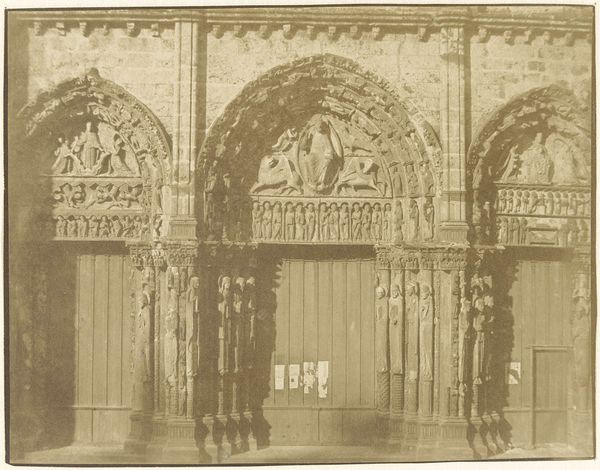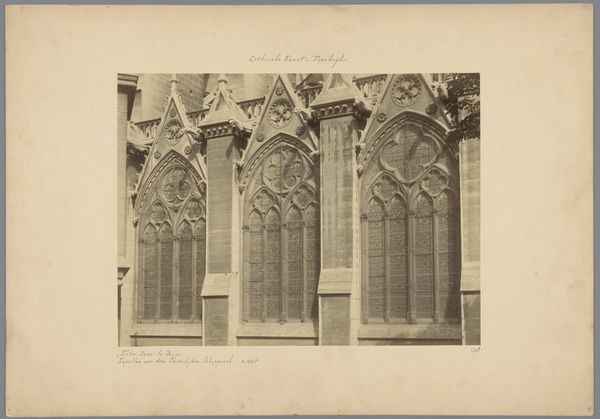
print, photography, architecture
#
16_19th-century
#
pictorialism
# print
#
historic architecture
#
photography
#
architecture
Dimensions: 8.2 × 8.2 cm
Copyright: Public Domain
Curator: Let's consider Frederick H. Evans' "Ely Cathedral: Presbytery, from an Engraving," created around 1891. A magnificent photographic print currently residing at The Art Institute of Chicago. Editor: The repeating arches and intricate stonework definitely create a sense of awe. What strikes me is how Evans captures the sheer verticality and almost seems to be inviting a dialogue with spiritual heights, and how it makes me feel so small! How do you interpret this work, particularly considering its historical context? Curator: Well, I look at it through a lens of power and representation. The Church, especially during the 19th century, was a site of immense social control and influence. Evans' romantic portrayal, using the aesthetics of Pictorialism, tends to overlook the complicated legacy of institutions like Ely Cathedral. Who did this space serve? Whose voices were amplified within these walls, and whose were silenced? Consider the workers, often nameless and faceless, who built such structures. Editor: So you’re suggesting that we need to question the narrative of purely aesthetic or spiritual appreciation and consider the socioeconomic implications? Curator: Precisely. How does this image function as a form of visual propaganda, reinforcing existing power structures? Photography at this time had the power to shape perceptions. By focusing solely on the beauty, are we complicit in erasing the struggles and inequalities inherent in the cathedral’s history? Also, Evans was consciously imitating engraving techniques - does that also create another layer of meaning and power, suggesting photography’s attempt to legitimize itself as art, with religious institutions as its vehicle to the higher spheres? Editor: I hadn’t thought of it that way, but now I'm seeing the photograph not just as a beautiful depiction, but as a document deeply intertwined with complex power dynamics and aspirations for artistic recognition. Thank you! Curator: Absolutely! It’s about understanding that art is never neutral; it always carries ideological weight. Hopefully you can see now, in what ways, architecture also holds similar attributes.
Comments
No comments
Be the first to comment and join the conversation on the ultimate creative platform.
